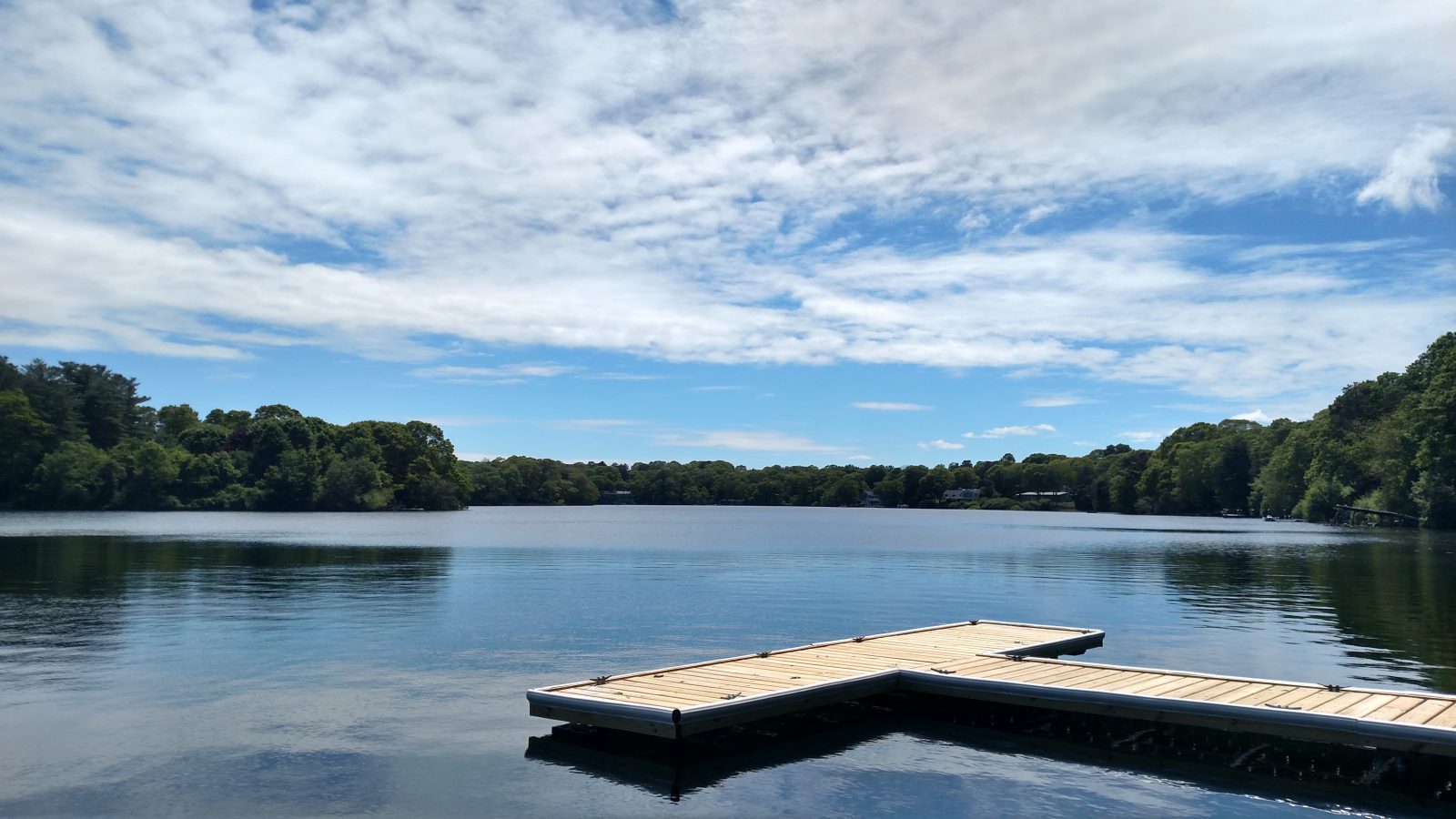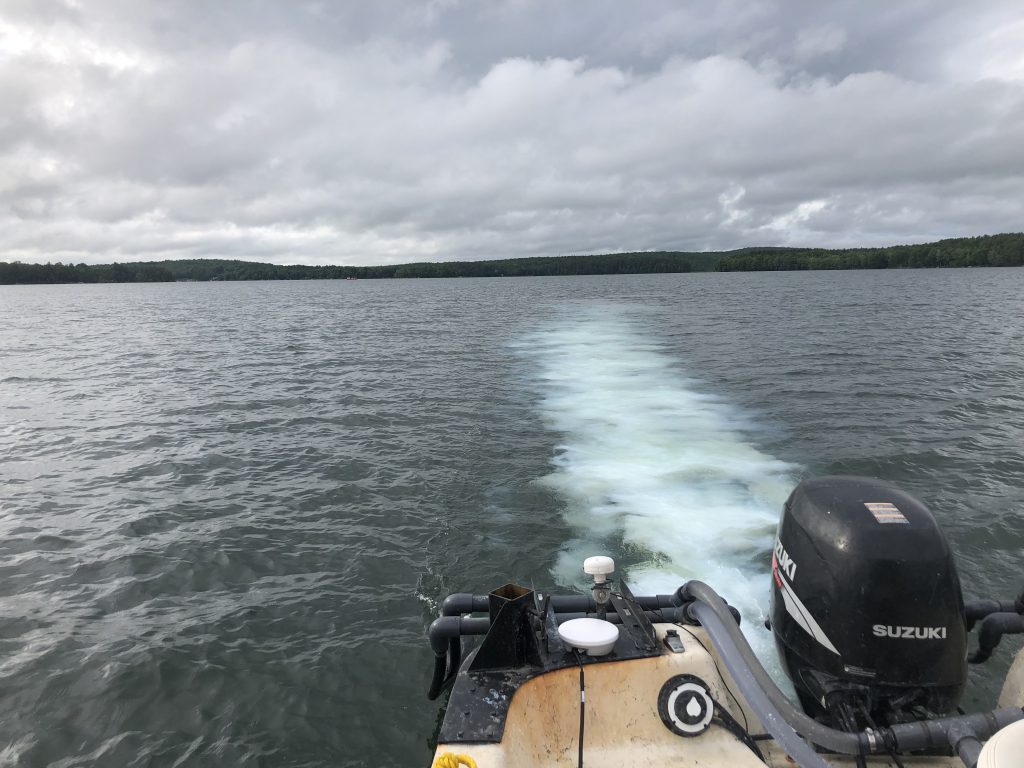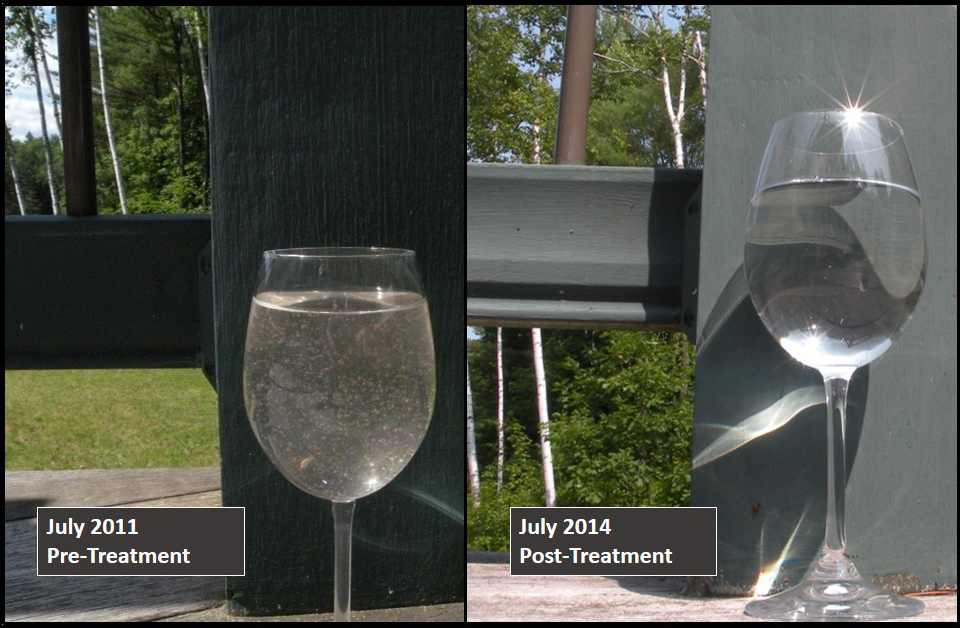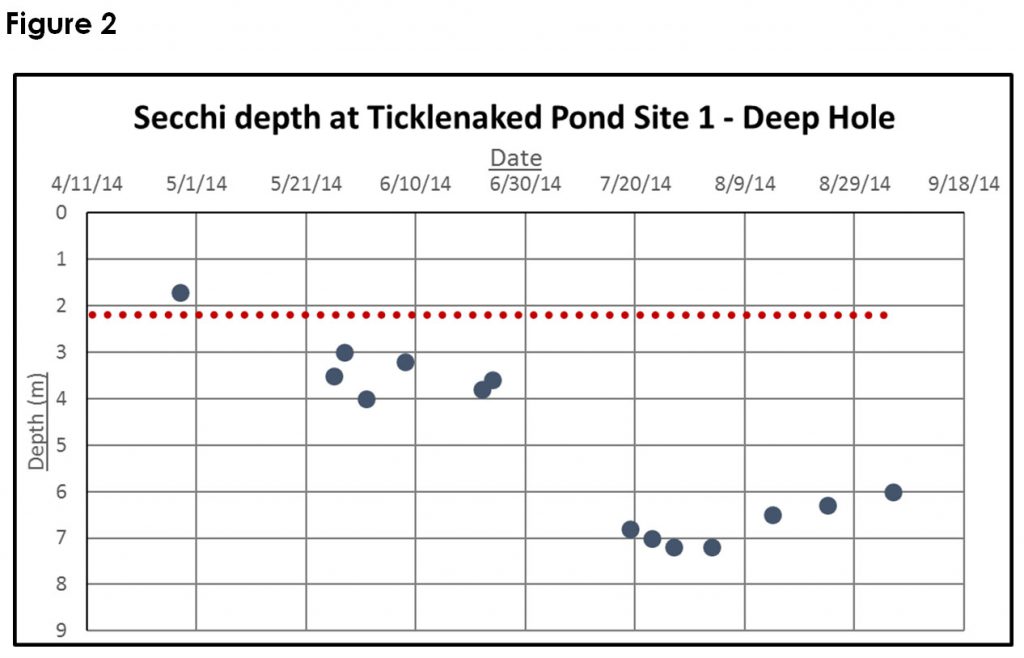

Site Description
Location: Ryegate, VT
The pond is a 54-acre waterbody with a maximum depth of 46-feet and an average depth of 16-feet. The pond provides valuable fish & wildlife habitat as well as recreational opportunities for area residents, however, there is a long history of nuisance algae blooms and associated water quality impairments (low clarity, low dissolved oxygen, and elevated pH) due to excessive phosphorus loading. This pond is listed on the 303(d) List of Impaired Waters for these issues and a TMDL was developed in 2009 by the VT DEC.
This project was a collaborative effort involving the VT DEC, the pond’s Association, the local Town, and consultants, including SOLitude Lake Management and Water Resources Services, Inc. (WRS). The project, which was funded by the State of Vermont through an Ecosystem Restoration Grant to the Town, was the first public lake alum treatment performed in the state in more than 25 years.
This was a well-studied pond and significant watershed management work was completed prior to addressing the internal loading of phosphorus with alum. Although a relatively small pond, the treatment was challenging due to the presence of significant algae growth and elevated pH levels requiring field adjustment to the treatment plan. The treatment was completed successfully and resulted in a marked improvement in water clarity and phosphorus levels.
Scope of Work
Phosphorus is one of the primary nutrients utilized by algae to proliferate. Managing it is an effective long-term strategy towards reducing undesirable, nuisance algae blooms and improving overall water quality. When applied to freshwater, aluminum sulfate binds with available phosphorus rendering it biologically inactive. Higher doses can create a buffer over the sediment and prevent phosphorus from releasing during anoxic conditions.
SOLitude reduced internal phosphorus loading within the pond to aid in achieving the Total Maximum Daily Load (TMDL) goal of 24 ppb established by Vermont Department of Environmental Conservation and performed buffered alum treatment to strip phosphorus from the water column and inactivate it in pond sediments.

Project Description
Based upon previous experience inactivating phosphorus in waterbodies throughout New England, SOLitude was contracted by the Town of Ryegate, Vermont, to perform the alum treatment. The treatment program was formulated by Dr. Ken Wagner of Water Resource Services with the input of the Vermont Department of Environmental Conservation (DEC) and SOLitude.
The project was not without its challenges. An algae bloom at the time of treatment produced unexpected water chemistry. Algae samples analyzed by Dr. Wagner determined the dominant species to be the diatom Aulacoseira, which likely caused the brown color of the water, and cyanobacteria Planktothrix, which is often toxic. High chlorophyll-a values were attributed to the significant algae growth. Additionally, despite pH being in the desirable range in late April, by mid-May, surface pH values increased to between 9.2-9.4 SU due to the algal bloom. During a meeting on the morning of the pilot treatment with SLM personnel, Dr. Wagner, and VT DEC, it was agreed to try using alum alone to lower the pond’s pH to the desirable range, at which point a ratio of alum and SA would be utilized to maintain the pH (See Figure 1).

The treatment was performed over the course of four days in May. Only alum was applied the first two days lowering the pH into the desirable range. Alum and SA were applied the following two days at a modified ratio maintaining the desired pH. Water chemistry parameters (Temperature, dissolved oxygen, pH, alkalinity) were monitored in the field to maintain desirable conditions and prevent adverse effects to fish.

Initial results indicate the alum treatment achieved desired objectives. Water clarity increased from 1.7m prior to treatment to 3.8m one month post-treatment. By early August water clarity had increased to 7.2m (See Figure 2). Total and dissolved phosphorus generally decreased from pre-treatment levels, especially at the surface. Water pH rebounded within one month to pre-treatment range. Dissolved and total Aluminum decreased from expected elevated levels during treatment and maintained desirably low ratio of dissolved to total aluminum.









